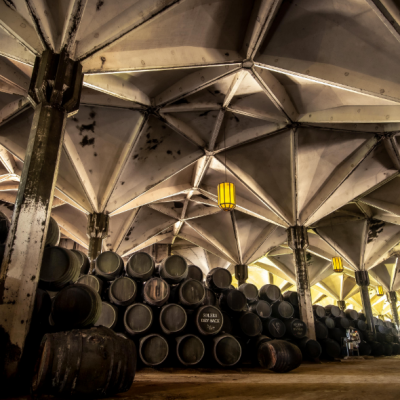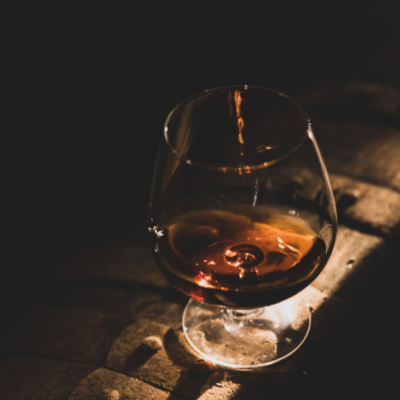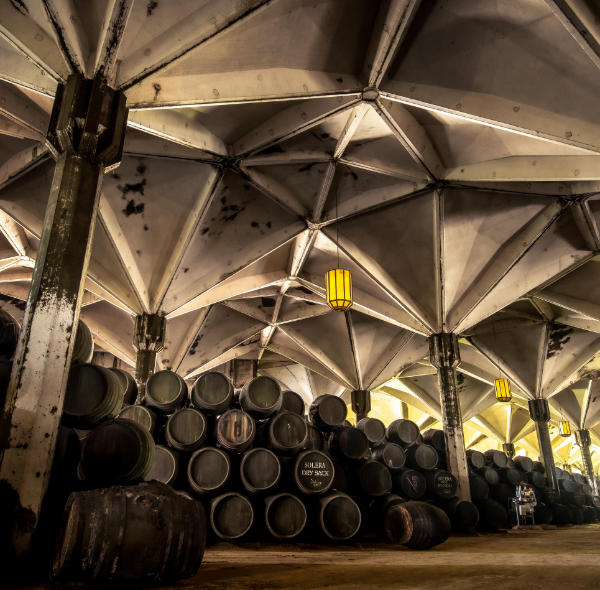02 Feb dark rum production
Dark rum production - History, Production and process

Today we talk about that enigma within the mystery of rum: dark rum production. The rum production process is, in theory, easy enough to understand. Sugar cane is grown, harvested and it or its by-products (sugar cane juice, molasses etc…) are fermented and distilled and then typically aged in barrels before bottling. This method of production harkens all the way back to the 1600’s in the Caribbean. But the term “dark” feels as open-ended as the crooked smile on Da Vinci’s Mona Lisa. Why is this? What does dark truly mean when talking about rum? Let us demystify terms like dark, aged, blackstrap, black seal or just black.
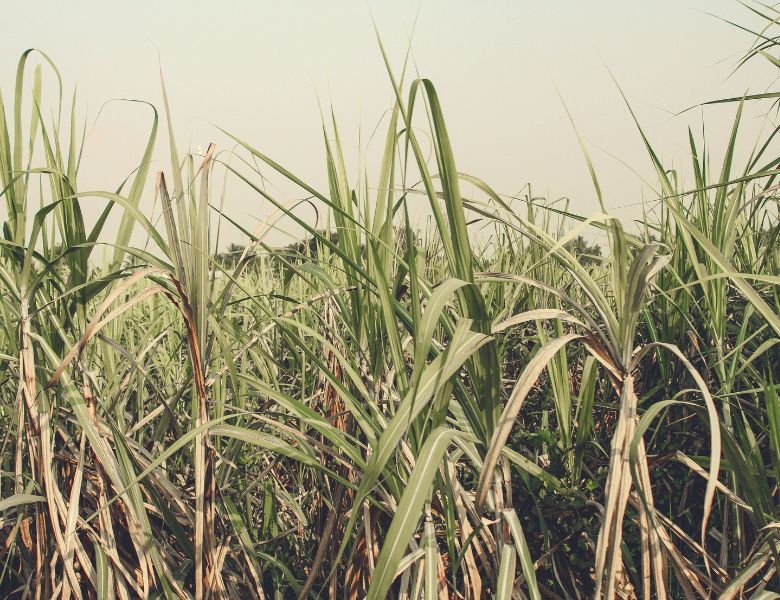
The basics of rum and its production process
The first thing to consider in the basics of rum production is something that makes rum vastly different from most other spirits: Rum production can occur anywhere. And because of this fact, there are different regulations depending on what country you are in. That being said, all rum must be made from sugarcane. This raw material can include its by-products such as sugar cane juice, syrup or molasses which are then fermented and distilled. All rum must also exhibit classic rum character and be bottled like a spirit and not a liqueur. While specific definitions and/or regulations will differ around the globe, generally speaking, this means that rum should be over 37,5% ABV (40% in the US) and have a limit on its sugar levels. So real skin & bones-like, exactly how is rum produced?
- Sugar cane is harvested
- Sugar cane is pressed, juice is extracted
- juice is either fermented or further cooked down and then fermented
- ferment is distilled
- barrel age
- additives (if any)
If you stand back and consider just the last 2 factors, you really get to the crux of the birth of the term “dark” in rum branding. Colors like gold, amber, black or modifiers like light or dark are all derived from the influence of oak and other additives like caramel coloring on the overall hue of rum and other spirits. All distillates will be clear regardless of their raw material, but aging and or oxidizing in oak barrels can naturally achieve a darker product over a certain time period. The addition of caramel will achieve the look of an older oak matured spirit without the commitment of said specific time. The term “dark” is not a regulated term, but it has evolved to become a recognized one, with a certain meaning attached, albeit still quite loosely.
- The first meaning attributed is one being in contrast to “light” rum. If light rum is meant to be shaken and mixed into cocktails and to NOT influence the color of other cocktail ingredients, then “dark” rum will not abide the same way.
- If light rums are attributed with more fresh cane and vegetal notes, have a steelier mineral vibe, or have less oak influence to mask their alcohol, then “dark” rums are a bit richer, sweeter and are more spice-forward rather than mineral-driven.
Types of dark rum to pair with cheese
The Dos Maderas rums are not only dark rums which already lend themselves to pairing flavour wise with cheese, but they have an extra dimension also. After ageing in Barbados and Guyana for five years, the rums are then transported to Jerez in Spain to continue their ageing in old barrels. Two of the best sherries to pair with cheese are Palo Cortado and Pedro Ximénez so the ageing of the Dos Maderas rums in these barrels make pairing these rums even more suited.
What factors affect rum quality?
It’s surely not a dumb question to ask the ineffable: what makes good rum? The measure of rum quality can be subjective but there are some key factors which influence character and rum quality ratings. Evaluating these elements is your key to better understanding how to know rum quality.
Consider the following:
- The nature of the raw elements. Is the ferment from fresh juice, syrup, molasses, a combination?
- The influence of yeasts on fermentation. Is the yeast wild, controlled, mixed? Is there an ongoing “mother” or source which continues to influence every generation of ferment after harvest?
- The character of differing types of stills used in distillation. Pot still? Continuous still, combination or other?
- The evolution of oak maturation. What types of oak? New & charred? Old? Any extra finishing? How long? Any blending of various casks?
- The nature of additives? Are there any? What role(s) do they play? Sweetness? Color? Texture?
- The quality of water used to dilute the final product. Mineral content? Is the water also distilled? Is it local with its own terroir?
Knowing even just a little about each of these offers insight into the intent of the rum producer and then we can determine via a proper tasting and evaluation whether or not the intent matches with the end result and more importantly, if that final sip is a delicious success. Now let’s consider the aging process.
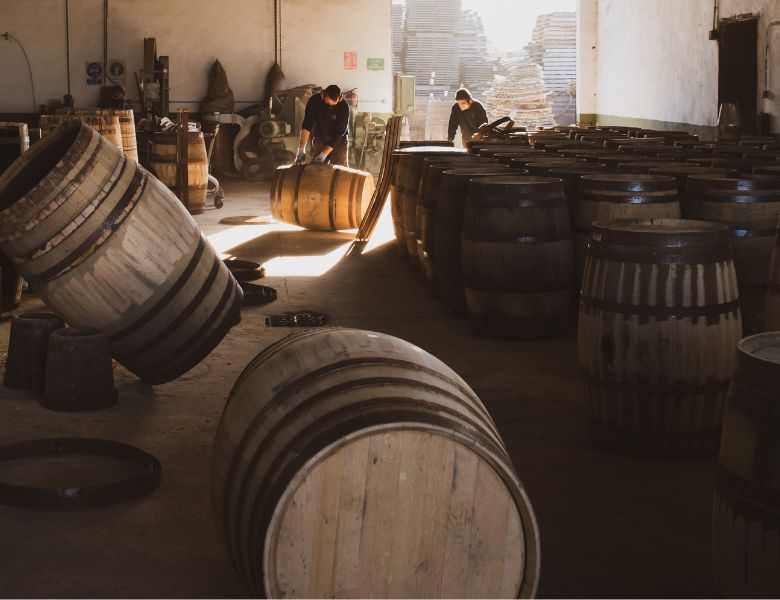
Specifics of barrels used in the aging process
The majority of barrels used in the dark rum aging process are white oak, typically from forests in Europe or America. Aging dark rum in the Caribbean using ex-Bourbon American Oak casks are particularly popular due to being closer in proximity and the unique regulations of Bourbon. Bourbon aging rules specifically require only using new oak with varying degrees of char. This creates an excess of ex-Bourbon casks on the market. European casks offer baking spices and nuttiness whereas American casks add more vanillin, popcorn, coconut & toffee. Depending on the level or degree of charring, these attributes can be heightened. Other casks are treated with sherry, madeira, sauternes, etc, and are simply ex-American or European casks that are older and soaked in their respective wines and corresponding vinous character. Think of these casks as all fitting into a greater deluxe recycling program where one bodega’s used cask is another brand’s gold ticket to sensory glory. It’s barrel mixology with a master blender at the helm of each brew. Want to learn much more about the specific impact of sherry casks on the character of spirits?
With all this in mind, perhaps most important in determining quality as well as color is the effect of aging rum in barrels. When asked how is rum aged, most folks know the answer: oak! While longer time spent in oak usually equates to more color, there are other elements to consider as well.
1) Oak that has been treated with other wines can add more complexity, color and richness.
2) Color does not continue to forever get darker with age. At some point, long barrel time will mean a certain loss of saturation without any type of additive for preservation.
Think on this: a particularly dark rum will usually have only gotten so by using oak that has been charred and charred oak also naturally equates to more caramelized lactones and flavors. Also, the additive of caramel or its richer kin, molasses, will give an even darker hue as well as richer character and often be indicated on the label by the terms “black or blackstrap.”
Different ways of aging dark rum
Touch up your knowledge on the history of barrel aging as well as character differences between European and American oak and other key details here.
Standard cask aging of spirits is by way of 200 or 250 liter casks (between 200 and 250. Many bourbon casks are 225 liters.). This gives greater barrel surface area to liquid and allows for a quicker absorption of oak attributes. If aging in sherry casks (which are larger, usually 500 liters for spirits aging) then the surface area is less and the impact of oak is a bit different. Sherry casks are designed to taste more like sherry and less like oak on the whole, although the final impact is more of a balanced equation. Does sherry cask finishing affect the color of spirits? Short answer is yes. The oak staves have absorbed quite a lot of sherry and the darker the sherry, the darker the impact will be on the spirit. You can go further into the details of the effects of sherry cask aging here.

Aging rum using the criadera solera system
Let’s talk about the Criaderas y Solera System or simply, the Solera System. The Solera System is a “never-ending” fractional blending/aging system that was created in Jerez, Spain as a way to consistently barrel-age sherry wines for export in the late 1700’s and early 1800’s. The Exploration Age had opened up trade routes and sherry wines had become the most popular wine for shipping overseas and countries. The demand for these wines was growing at a rate that led to inventory and quality issues. The implementation of the Solera aging System allowed for the advent of what is now considered modern Sherry wine today. The adaptation of using the Solera System to age other wines and spirits continues to influence as well. Whenever you see NV or non-vintage on a label, the influence of Solera aging has been a factor. Be wary, of course: when you see Solera on the label of another spirit. As the global rum industry is not known for its tight regulations with aging, oftentimes the term on a label might be less de rigeur than one would expect.
How does the criadera solera system work?
Here is how it works: Criadera translates to “nursery” and Solera takes its root word from the Spanish term “suelo” which means floor. Series of barrels are stacked in levels designated as Criaderas and Solera. Each level contains wine or spirit of varying ages with the older blend always being lower. The Solera level is situated on the lowest level, located on the floor of the bodega as it is the oldest blend from where all bottling occurs. This is the most naturally cool area in a bodega since we know heat rises. The criadera levels are incrementally stacked above, organized with the oldest blend lower than the younger.
After wines from the year’s harvest are made, they are added to a system of barrels each with its own designation.
- The Solera is the oldest barrel blend and from which the wine or spirit is bottled.
- The 1st Criadera is the 2nd oldest and refreshes the Solera.
- The 2nd Criadera is the 3rd oldest and refreshes the 1st Criadera.
- The 3rd Criadera is the 4th oldest and refreshes the 2nd Criadera.
- Etc. There can be as little as 1, 2 or upwards of the mid teens in numbers of levels.
The barrels are never fully emptied which means that wines from the very start of the process will always make up the Solera. If the Solera started in 1900, then a small amount of wine from 1900 will always be a part of the blend. This creates a non-vintage consistent blend of both new and young wine.

How does Dos Maderas use the criadera solera system to age rum?
Dos Maderas is owned and operated by the illustrious Sherry Bodega: Williams & Humbert who were founded in 1877 and house the largest wine warehouse in all of Europe. Their mastery of the sherry craft and Solera aging is top notch. With their resources, they are able to set aside a section to focus on solera aging both rum and brandy. The same system is integrated on a smaller level where the final Solera rum is always a blend of the first rum to enter the system and the last. Furthermore, Williams & Humbert gives Dos Maderas access to its rare sherry casks including the VOS Dos Cortados Palo Cortado and VOS Don Guido PX. This means that rum is aged in sherry casks that typically aged Palo Cortado and PX sherry with a minimum age of 20 years. These casks themselves are nearly 100 years old. Read more about the in-depth detail of the impact of these casks and the Solera System on Dos Maderas rums here.
Author: Chantal Tseng, Bar-Somm, Washington DC
Share this article
How is rum aged? Why rum is aged in barrels
Rum is one of the most diverse spirits out there, made all over the world and using a variety of methods. Many countries have centuries of rum production heritage, while
Rum Styles – Rum Styles from around the world
Rum has a rich and varied history that’s tied to the history of various countries around the world. It’s a spirit that’s woven into the story of the colonisation of the Carib
7 Rum types – Rum Colors and taste difference
Rum is arguably one of the most varied, diverse and exciting spirits, made in many different parts of the world, each with their own approach to distilling and ageing their product
Related News
How is rum aged? Why rum is aged in barrels
Rum is one of the most diverse spirits out there, made all over the world and using a variety of methods. Many countries have centuries of rum production heritage, while


